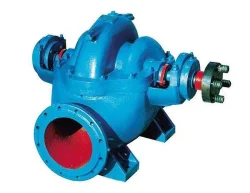How to Maintain and Optimize the Performance of Your High-Pressure Pump
2024-08-24
High-pressure pumps are essential tools in various industrial processes, and like any piece of equipment, they require regular maintenance to ensure optimal performance and longevity. Proper maintenance not only prevents costly downtime but also enhances the efficiency and reliability of the pump. Here’s a guide on how to maintain and optimize your high-pressure pump.
1. Regular Inspection and Monitoring
Routine inspections are the first step in maintaining a high-pressure pump. Regularly check for signs of wear, leaks, or unusual noises, which could indicate potential problems. Monitoring the pump’s performance metrics, such as pressure output and flow rate, can also help identify issues before they become serious.
Pressure Gauges: Install pressure gauges to monitor the pump's performance. If the pressure drops or fluctuates, it could be a sign of a problem within the pump or the system.
Fluid Levels and Quality: Ensure that the fluid levels are maintained according to the manufacturer's specifications. Using the correct type and quality of fluid is crucial for the pump's performance and longevity.
2. Proper Lubrication
Lubrication is key to reducing friction and wear on the pump’s moving parts. Regularly lubricate all necessary components as per the manufacturer’s recommendations. Over-lubrication can be as harmful as under-lubrication, so it’s important to follow the guidelines precisely.
Oil Changes: Depending on the type of pump, the oil may need to be changed periodically. Old or contaminated oil can cause excessive wear and reduce the pump’s efficiency.
3. Replace Worn Parts Promptly
High-pressure pumps operate under extreme conditions, which can lead to wear and tear over time. Components such as seals, valves, and bearings are particularly susceptible to wear. Replacing these parts as soon as signs of wear appear can prevent more severe damage to the pump.
Seals and O-Rings: Inspect seals and O-rings regularly for cracks or wear. These components are critical for maintaining pressure and preventing leaks.
Bearings: Check the bearings for signs of wear or damage. Worn bearings can cause vibration and noise, leading to further damage if not replaced promptly.
4. Keep the Pump Clean
Keeping the pump clean is vital for its performance. Dirt, debris, and contaminants can clog the pump, leading to reduced efficiency and potential damage. Regularly clean the pump and its components to prevent buildup.
Filters: Ensure that any filters in the system are clean and functioning properly. Clogged filters can reduce fluid flow and put extra strain on the pump.
5. Follow Manufacturer’s Maintenance Schedule
Every high-pressure pump comes with a maintenance schedule provided by the manufacturer. Following this schedule is crucial for ensuring that the pump operates efficiently and lasts as long as possible. This includes routine checks, part replacements, and system flushes.
Manufacturer Support: If you’re unsure about any aspect of your pump’s maintenance, don’t hesitate to contact the manufacturer for advice or support. They can provide guidance specific to your pump model and application.
6. Optimize for Efficiency
Beyond maintenance, optimizing the pump’s operation can lead to better performance and energy savings. Ensure that the pump is operating within its optimal pressure and flow rate range. Overworking the pump by pushing it beyond its design limits can lead to premature failure and increased energy costs.
System Design: Evaluate the entire system to ensure that the pump is correctly sized and integrated. An improperly sized pump can lead to inefficiencies and increased wear.
In conclusion, maintaining and optimizing your high-pressure pump is essential for maximizing its performance and lifespan. Regular inspections, proper lubrication, prompt part replacement, and adherence to the manufacturer’s maintenance schedule are all key steps in keeping your pump in top condition. By taking these steps, you can ensure that your high-pressure pump continues to perform reliably in even the most demanding industrial environments.



